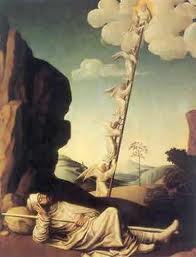 The week before Thanksgiving I went on a family vacation to Mexico, just as I did last year. My two all-time highest Z scores have come from these vacations–123 on the second night of the trip last year, and 125 on the first night of the trip this year. Both times I was in a big sleep rebound mode, having slept poorly the previous few nights before traveling. Both times I was in a very dark room and had absolutely nothing to do when I woke up. In the 15 months I’ve used the Zeo, these were the most predictably opportune times for a maximal amount of sleep. I’m glad to see the Zeo technology is capable of accurately representing the distinctive features of these kinds of unusual sleep experiences.
The week before Thanksgiving I went on a family vacation to Mexico, just as I did last year. My two all-time highest Z scores have come from these vacations–123 on the second night of the trip last year, and 125 on the first night of the trip this year. Both times I was in a big sleep rebound mode, having slept poorly the previous few nights before traveling. Both times I was in a very dark room and had absolutely nothing to do when I woke up. In the 15 months I’ve used the Zeo, these were the most predictably opportune times for a maximal amount of sleep. I’m glad to see the Zeo technology is capable of accurately representing the distinctive features of these kinds of unusual sleep experiences.
My next highest Z scores came the two nights afterwards in both cases–116 and 116 following the 123 last year, and 116 and 115 following the 125 this year. That third night this year, with the 115 Z score, I woke up from a very intense and elaborate dream. I immediately looked at the Zeo clock–it was 3:33 am, which struck me as an odd bit of symmetry.
I’ve transcribed the dream below. It’s one of the longest I’ve had in quite a while. Over the years I’ve had a few dreams similar to this, with an epic cinematic feel and lots of reality/perspective shifting. My phobia about New York City is on full display here!
Looking at my Zeo sleep graph for that night, I see that entered a REM phase at 2:25 am that lasted until 3:20 am. Then I entered a brief period of deep sleep until 3:25 am. After another bit of REM sleep at 3:30 am I was awake by 3:35 am.
I’m usually done with my deep sleep by midnight or 1 am, so it’s unusual to see the 3:25 am deep sleep. Since dreaming is usually associated with REM sleep and stage 2 NREM sleep (part of light sleep for Zeo purposes), I wonder if a) my dream came during the long REM phase ending at 3:20 am, or b) it was all condensed into the short REM phase at 3:30 am, or c) I started dreaming during the long REM phase and kept dreaming through the dip into deep sleep, back into REM and then awakening at 3:33.
If it were true that the dream continued from REM through the deep sleep phase and back into REM, perhaps that might be related to some of the dramatic shifts and metamorphoses appearing at various points in the dream narrative.
Trying to Escape in New York City
I’m in New York City, walking down a street crowded with people….I go into a weird alley area….fences and garbage and strange people….I see a guy hunched up behind a garbage can in the shadows….I try to get back to the regular street, but to do so I have to climb through a hole in the fence, then try climbing up and over another fence….it has barbed wire at the top, so I’m stuck….as I try to do all this, I get in worse trouble, the bad guys see me caught up….Then I go to an inside place where the top bad guy is sitting at a table….there’s no way for me to escape….they’re laughing and talking, and I join in, but there’s a sense of menace in the air, I’m very scared….at one point one of the guys grabs at my balls, I jump back in alarm….they have total control over me….then cops come after the bad guys, and we all flee….it becomes an endless chase, with me trying to get away….but I can’t….at one point I find myself watching the filming of a Clint Eastwood movie about World War II, with planes swooping over a big canyon area and shooting at soldiers below….it’s like this place belongs to Mayor Bloomberg, he’s letting them use it for the movie?….Then I see Japanese guards with pick axes attacking people….they’re coming after me, too?….I run….at some point there’s a parade through the NY city streets….My friend E. is in the parade, he goes forward with the rest, with a big truck behind him….I keep running….we go inside buildings, and now I’m trying to help the bad guys; the cops are worse, they’re our mutual enemy….I could get away, but I’m part of the group now….it’s like we’re in a big department store….at one point we swing on elastic straps hanging down from the ceiling lights….we fly through the air, swinging around to get away….there’s a flashback to when the main guy lost his son to the cops?….that explains why he hates them so much….a few of us run down an escalator and hold it steady for the rest to come quickly, while I go ahead and find an emergency exit….but it turns out to be a weird orange or red room with people in it, like a party place….not an exit….so I go back out….I run through the garage of a fire fighters station, and think about taking their uniforms to disguise us….but no….then outside, we seem to have a moment where the cops don’t know where we are….I sit down at the table of a sidewalk cafe, with the top bad guy….other people just left the table, so we sit there as if we’re normal….the cops ignore us here…but the waiter knows the top bad guy….they’re lovers?….now the table is like a pool of water, and the top guy and I are floating in it….the waiter guy turns into a weird creature or machine, and he goes hunting/searching through the building for information to help us….At one point I drop my wallet, I see it back by a garbage can….I quickly dash down to get it before someone else grabs it….at another point I’m hiding behind a garbage can, just like the guy at the beginning….toward the end my wife is there, she’s skeptical and disapproving of all the mayhem and property damage that’s being caused….then it’s like the end of a movie….I miss the final credits, and I ask my daughter what the last line said….she says, “thus ends the tale of Don Quixote”….oh, I realize the whole thing has been an adaptation of the Don Quixote story….the main guy is Don Quixote, and some little guy is Sancho?….the end, which I’m watching rather than being in, involves the final destruction and death of all the bad guys from the cops, who are robots or machines now….no way to stop them, their dominance is inevitable….now the movie is over, we walk back through the rubble of the city….My mother-in-law is with us?….she and my daughter are walking fast ahead of us….I’m worried that we need to get out of here quickly, we’re in a weird city place that’s dark and filled with rubble, I don’t want to have trouble for real….




 A dream researcher friend asked if knew anything about the role of dreams in Shakespeare’s romantic comedy “A Midsummer Night’s Dream,” since she could not find any good info on the web. Here’s my response, which she suggested I post:
A dream researcher friend asked if knew anything about the role of dreams in Shakespeare’s romantic comedy “A Midsummer Night’s Dream,” since she could not find any good info on the web. Here’s my response, which she suggested I post: